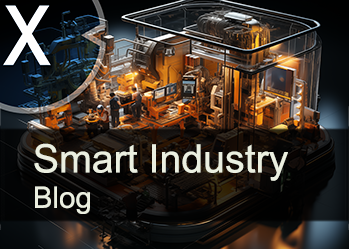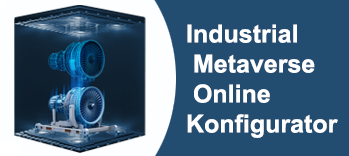Is the dot-com bubble of 2000 repeating itself? A critical analysis of the current AI boom
Xpert pre-release
Language selection 📢
Published on: September 27, 2025 / Updated on: September 27, 2025 – Author: Konrad Wolfenstein

Is the dot-com bubble of 2000 repeating itself? A critical analysis of the current AI boom – Image: Xpert.Digital
The $800 Billion Hole: Why the AI Dream Could Soon Run Out of Money
Billions in losses at OpenAI: Even the $200 subscription is a loss-making business – how long can this last?
The hype surrounding artificial intelligence has gripped global markets, and its sheer force is reminiscent of a time many investors still have with distaste: the dot-com bubble around the turn of the millennium. The parallels are striking: astronomical valuations for companies with barely profitable business models, a gold rush mentality that pours hundreds of billions of dollars into a single technology, and the firm belief that we are on the verge of an economic revolution. But as tech giants like Microsoft and Google engage in an unprecedented arms race for AI supremacy, doubts about the sustainability of this boom are growing.
An alarming study by Bain & Company predicts a funding gap of $800 billion, as the industry's revenues fall far short of the skyrocketing costs of computing power and infrastructure. Even industry leader OpenAI is burning billions and making losses on its subscriptions—a clear indication that monetizing the technology represents a formidable hurdle. At the same time, a new, low-cost competitor from China is causing unrest and threatening to undermine the expensive business models of established providers.
But is the comparison with the dot-com era really justified? There are crucial differences: Today's technology is more mature and already firmly embedded in everyday business. Furthermore, the boom isn't being financed by small investors borrowing, but rather from the bulging coffers of the world's most profitable corporations. The crucial question that will determine trillions of dollars in investment and the future of the global economy is therefore: Are we at the beginning of a lasting technological transformation or in the final phase of a gigantic speculative bubble about to burst?
Suitable for:
The OpenAI scare from China: How a cheap provider is now making the tech giants sweat
Are we once again in a speculative bubble similar to the infamous dot-com bubble of the year 2000? This question is currently occupying investors, analysts, and technology experts worldwide. The rapid rise of artificial intelligence and the associated billions in investments draw striking parallels to the late 1990s. Back then, the internet hype led to extreme valuations and culminated in a spectacular crash. Today, AI companies face similar challenges: astronomical valuations clash with unclear business models, while the gap between investments and actual revenues continues to widen.
Historical parallels to the dotcom bubble
The dynamics of the dotcom era
The dot-com bubble of the late 1990s was fueled by a revolutionary new technology—the internet—which, much like AI today, was perceived as a transformative force. Between 1996 and 2000, technology company valuations reached astronomical heights, with price-earnings ratios of 50, 70, or 100 becoming commonplace for Nasdaq stocks. Investors believed in a rosy future in which traditional business models would be revolutionized by internet-based solutions.
The turning point came in March 2000, when the first startups went bankrupt and the hard facts of economic reality caught up with the exaggerated expectations. The companies had to invest more than they had anticipated, revenues were sparser than expected, and the cash burn no longer justified the extreme valuations.
Current market valuations in comparison
Today, the S&P 500, adjusted for cyclical fluctuations, bears remarkable similarities to that time. The current valuation level corresponds to 38 times the earnings of the past ten years. Only during the dot-com bubble was the valuation higher, as strategists at Morgan Stanley point out.
Henry Blodget, a former star analyst of the dot-com era, warns of uncanny parallels to the current AI boom. He emphasizes that the impact of both the internet and AI extends far beyond the tech industry. Investments in AI infrastructure amount to at least $400 billion this year alone, massively boosting the global economy and stock markets.
The financing gap in the AI industry
Bain & Company's alarming forecast
A recent study by Bain & Company reveals a threatening funding gap in the AI industry. By 2030, AI companies like OpenAI, Google, and DeepSeek will need to generate approximately $2 trillion annually to cover the rising costs of computing power and infrastructure. However, the consultants expect the industry to fall about $800 billion short of this target.
David Crawford, Chairman of Bain & Company's Global Technology Practice, warns urgently: "If current scaling laws prevail, artificial intelligence will increasingly burden global supply chains." This discrepancy between required and expected revenues raises fundamental questions about the valuation and business models of the AI industry.
Monetization problems of leading companies
OpenAI, the company behind ChatGPT, is a prime example of the industry's monetization problems. Despite a valuation of $300 billion and 700 million weekly active users, the company has only five million paying customers. Losses amounted to around $5 billion in 2024, and losses of as much as $9 billion are forecast for 2025.
Particularly problematic is that even the more expensive ChatGPT Pro subscription, costing $200 per month, is generating losses because users are using more services than expected. CEO Sam Altman calls this situation "crazy," confirming the challenges of covering costs.
Massive investments versus unclear returns
The $500 billion arms race
Major US technology companies are driving their AI investments to unprecedented levels. Microsoft, Meta, and Google are planning a combined $215 billion for AI projects by 2025. Amazon has announced an additional $100 billion in investments. These expenditures will primarily go toward expanding data centers and developing new AI models.
Investments have more than doubled since the launch of ChatGPT. By 2024, the four largest tech companies had invested a combined $246 billion in AI—a 63 percent increase over the previous year. By the early 2030s, annual spending on AI could exceed $500 billion.
Suitable for:
- Does the 500 billion dollar AI boom in the United States stop? Microsoft strokes several planned data centers
Energy demand and infrastructure challenges
Bain predicts that additional global demand for computing power could climb to 200 gigawatts by 2030, half of which will be in the United States. AI data center power consumption will increase from 50 billion kilowatt-hours in 2023 to around 550 billion kilowatt-hours in 2030—an elevenfold increase.
This massive expansion will have significant environmental impacts. Despite the expansion of renewable energy, greenhouse gas emissions from data centers will rise from 212 million tons in 2023 to 355 million tons in 2030. Water consumption for cooling will nearly quadruple to 664 billion liters over the same period.
A new dimension of digital transformation with 'Managed AI' (Artificial Intelligence) - Platform & B2B Solution | Xpert Consulting

A new dimension of digital transformation with 'Managed AI' (Artificial Intelligence) – Platform & B2B Solution | Xpert Consulting - Image: Xpert.Digital
Here you will learn how your company can implement customized AI solutions quickly, securely, and without high entry barriers.
A Managed AI Platform is your all-round, worry-free package for artificial intelligence. Instead of dealing with complex technology, expensive infrastructure, and lengthy development processes, you receive a turnkey solution tailored to your needs from a specialized partner – often within a few days.
The key benefits at a glance:
⚡ Fast implementation: From idea to operational application in days, not months. We deliver practical solutions that create immediate value.
🔒 Maximum data security: Your sensitive data remains with you. We guarantee secure and compliant processing without sharing data with third parties.
💸 No financial risk: You only pay for results. High upfront investments in hardware, software, or personnel are completely eliminated.
🎯 Focus on your core business: Concentrate on what you do best. We handle the entire technical implementation, operation, and maintenance of your AI solution.
📈 Future-proof & Scalable: Your AI grows with you. We ensure ongoing optimization and scalability, and flexibly adapt the models to new requirements.
More about it here:
Is a new dotcom crisis looming? A controlled correction or a crash? Cheap models, fierce price pressure? Billions in losses versus real benefits?
Differences to the dotcom bubble
Financing structures and risk minimization
Henry Blodget highlights two key differences from the dot-com bubble. First, much of the AI activity is financed in private markets, meaning retail investors would be less directly affected in the event of a crash. Second, the build-up is largely financed from the profits of the tech giants rather than through debt.
These structural differences could limit the impact of a potential AI crash. Blodget notes: "In an AI crash, there would be plenty of pain. Stock markets and commercial real estate would be hit hard, gigantic data center projects would be sold off for ridiculously low prices, and hundreds of startups and service providers would go under. But at least for now, the damage would be limited."
Suitable for:
Maturity of the underlying technology
In contrast to the dot-com era, when the internet was still in its infancy, AI is already demonstrating concrete applications and benefits. According to a Bain survey, nearly all companies have begun using AI in go-to-market functions. 62 percent are already working with more than two use cases, and 57 percent stated that AI has exceeded their expectations.
Nevertheless, more than half of the companies surveyed admit that they have not yet created a sufficient data foundation to fully exploit the technology's potential. Incomplete or low-quality data sets and suboptimally configured technologies were cited as key challenges.
DeepSeek as a turning point
Cost-effective innovation from China
The Chinese startup DeepSeek has shaken up the AI industry with its R1 model. With an estimated development cost of just $5.6 million, the company has developed a model that can compete with the significantly more expensive US models. By comparison, OpenAI's GPT-4o cost approximately $80 million to develop.
DeepSeek's pricing massively undercuts the competition. The company's models are 20 to 40 times cheaper than corresponding models from OpenAI. DeepSeek's Reasoner model costs 53 cents per million input tokens, while OpenAI's o1 model costs $15 for the same number.
Suitable for:
- Efficiency instead of gigantism: what is behind the success of Deepseek - Donald Trump referred to Deepseek as a “wake -up call”
Impact on industry dynamics
DeepSeek's success challenges previous assumptions in the AI industry. The company proves that cutting-edge AI is possible even without billion-dollar budgets, putting established providers under considerable pricing pressure. This development highlights an interesting side effect of the US export restrictions: The technical limitations forced the company to engage in software innovations to make optimal use of the available hardware.
Within a few weeks, DeepSeek's AI assistant captured 21 percent of the global LLM user share and displaced ChatGPT as the most popular free app in Apple's App Store. This rapid market penetration highlights the volatility of the AI market and the danger for established providers with cost-intensive business models.
Suitable for:
- The AI quake: Deepseek R1 reveals the weaknesses of the tech industry-is that the end of the AI boom?
New technology areas and their potential
Quantum computing as a long-term perspective
According to Bain, quantum computing could unlock up to $250 billion in market value over the next ten years, primarily in finance, pharmaceuticals, logistics, and materials science. The market size is expected to grow from $1.65 billion in 2024 to $64.12 billion by 2037, corresponding to a compound annual growth rate of 32.2 percent.
However, at least four major hurdles stand in the way: hardware maturity, algorithm development, quantum machine learning, and practical profitability. Analysts do not anticipate a sudden breakthrough, but rather a gradual introduction in niche areas.
Humanoid robotics in the early stages
While humanoid robots are attracting capital, they remain heavily dependent on human oversight. Goldman Sachs predicts that the humanoid robot market will reach $38 billion by 2035—more than six times the previous year's forecast. Another study even predicts that 20 million humanoid robots will be in use by 2030.
The first industrial pilot projects are showing promising results, with payback periods of less than 0.56 years. Companies such as Boston Dynamics, Agility Robotics, and Tesla are driving development forward, with Tesla aiming to produce several thousand Optimus robots this year.
Autonomous agents as a growth area
According to Bain estimates, companies will invest up to 10 percent of their technology budgets in core capabilities such as autonomous agents that perform complex tasks largely independently over the next three to five years. This development could open up new revenue streams and significantly increase the efficiency of AI systems.
Critical assessment of the market situation
Time of possible blistering
The crucial question is: Are we years away from the bubble bursting, or just months away? Henry Blodget puts it succinctly: "Is it 1996 or 1999?" There's no definitive answer, but the indicators show both parallels and important differences with the dot-com era.
Deutsche Bank warns of a bizarre truth behind the US economic boom: Without the massive AI investments, the US would already be in recession. George Saravelos puts it in a shocking phrase : "AI machines are literally saving the US economy." Economic growth isn't coming from revolutionary AI applications, but from simply building the infrastructure to generate AI capacity.
Sustainability of current developments
The study by Bain & Company casts a critical spotlight on the sustainability of the current AI euphoria. While the use of language models and other applications is growing rapidly worldwide, the promised efficiency gains and new revenue streams are so far insufficient to cover the gigantic investments.
What's particularly problematic is that many AI companies aren't yet able to successfully monetize their products. OpenAI, for example, doesn't expect positive cash flows until 2029. Other industry giants are also prioritizing growth over profitability and hoping for future economies of scale.
Potential scenarios and impacts
Scenario of a controlled downturn
In the best-case scenario, the AI industry could stabilize through technological advances and new business models. The introduction of advertising in AI services like ChatGPT could open up new revenue streams. Projections predict that OpenAI could generate billions in revenue with "free-user monetization" starting in 2026, and up to $25 billion by 2029.
The gradual maturity of the technology could lead to sustainable business models. Reasoning models capable of complex reasoning and agent-like action require hundreds to thousands of times more computing power, but could also justify correspondingly higher prices.
Market crash scenario
In the worst-case scenario, an AI crash could wreak similar havoc to the dot-com bubble. Stock markets and commercial real estate would be massively hit, gigantic data center projects would be sold off for ridiculously low prices, and hundreds of startups and service providers would go under.
The $800 billion funding gap predicted by Bain & Company could lead to industry consolidation. Only the financially strongest companies would survive, while smaller providers and startups could disappear from the market.
Crash or controlled correction? The critical years of AI
The AI industry is at a critical inflection point. While the parallels to the dot-com bubble are unmistakable—astronomical valuations, unclear business models, and a growing gap between investments and revenues—there are also important differences. AI technology is already demonstrating concrete applications and benefits, funding is largely provided by profitable tech giants, and the market is less dependent on retail investors.
The challenge lies in successfully monetizing the enormous investments. Companies like OpenAI must prove they can turn their multi-billion dollar losses into sustainable profits. The development of low-cost AI models by providers like DeepSeek further increases the pressure and could lead to a price war that further complicates profitability.
Whether the AI bubble develops into a controlled correction or a dramatic crash depends on the industry's ability to develop viable business models in a timely manner. The coming years will show whether artificial intelligence lives up to its enormous expectations or whether we will witness a repeat of the dot-com disaster. The answer to the question "Is it 1996 or 1999?" will determine the fate of trillions of dollars in investments and the future of the technology industry.
Your AI transformation, AI integration and AI platform industry expert
☑️ Our business language is English or German
☑️ NEW: Correspondence in your national language!
I would be happy to serve you and my team as a personal advisor.
You can contact me by filling out the contact form or simply call me on +49 89 89 674 804 (Munich) . My email address is: wolfenstein ∂ xpert.digital
I'm looking forward to our joint project.
☑️ SME support in strategy, consulting, planning and implementation
☑️ Creation or realignment of the AI strategy
☑️ Pioneer Business Development
Our US expertise in business development, sales and marketing
Industry focus: B2B, digitalization (from AI to XR), mechanical engineering, logistics, renewable energies and industry
More about it here:
A topic hub with insights and expertise:
- Knowledge platform on the global and regional economy, innovation and industry-specific trends
- Collection of analyses, impulses and background information from our focus areas
- A place for expertise and information on current developments in business and technology
- Topic hub for companies that want to learn about markets, digitalization and industry innovations




























